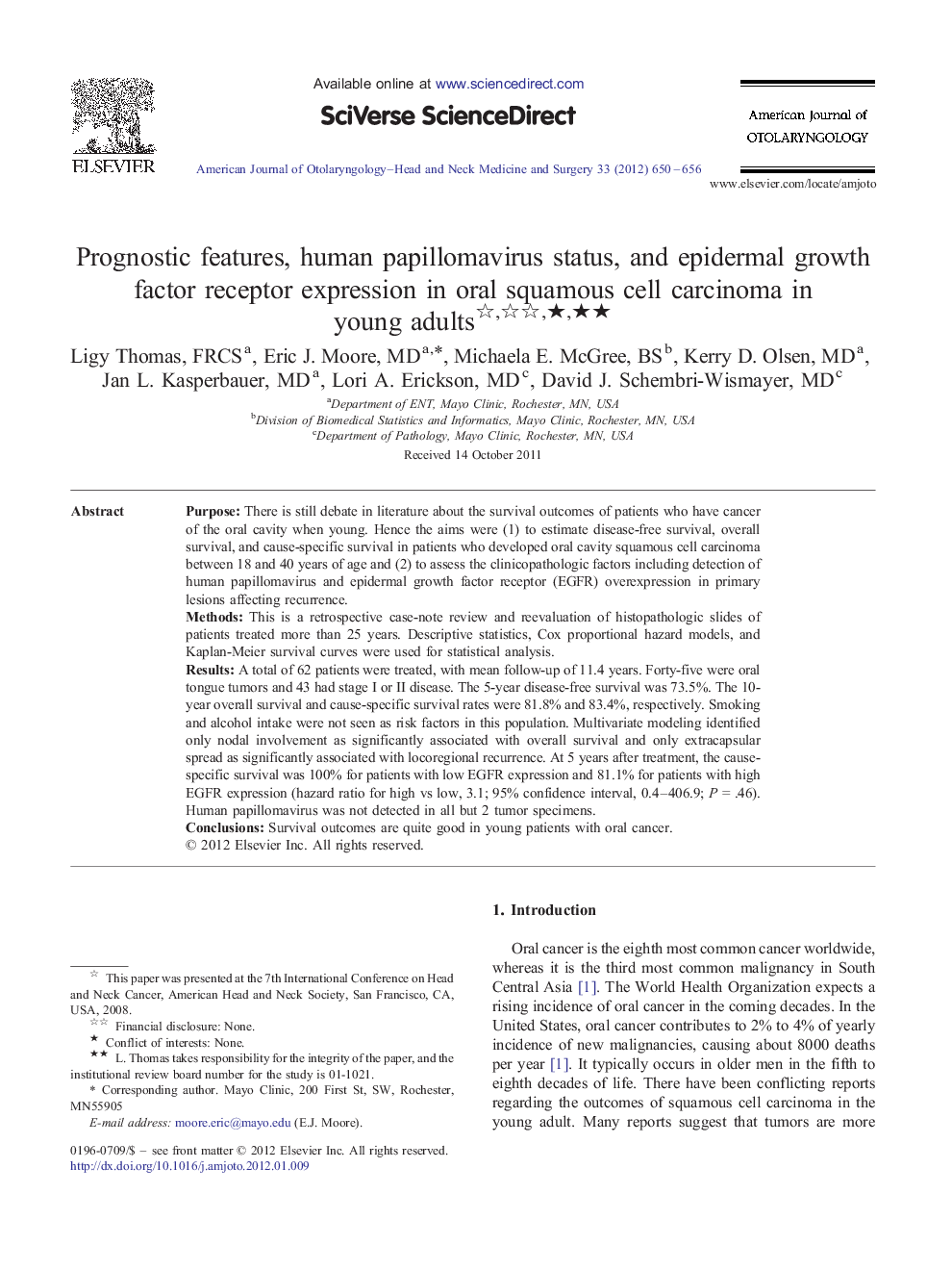| Article ID | Journal | Published Year | Pages | File Type |
|---|---|---|---|---|
| 4103307 | American Journal of Otolaryngology | 2012 | 7 Pages |
PurposeThere is still debate in literature about the survival outcomes of patients who have cancer of the oral cavity when young. Hence the aims were (1) to estimate disease-free survival, overall survival, and cause-specific survival in patients who developed oral cavity squamous cell carcinoma between 18 and 40 years of age and (2) to assess the clinicopathologic factors including detection of human papillomavirus and epidermal growth factor receptor (EGFR) overexpression in primary lesions affecting recurrence.MethodsThis is a retrospective case-note review and reevaluation of histopathologic slides of patients treated more than 25 years. Descriptive statistics, Cox proportional hazard models, and Kaplan-Meier survival curves were used for statistical analysis.ResultsA total of 62 patients were treated, with mean follow-up of 11.4 years. Forty-five were oral tongue tumors and 43 had stage I or II disease. The 5-year disease-free survival was 73.5%. The 10-year overall survival and cause-specific survival rates were 81.8% and 83.4%, respectively. Smoking and alcohol intake were not seen as risk factors in this population. Multivariate modeling identified only nodal involvement as significantly associated with overall survival and only extracapsular spread as significantly associated with locoregional recurrence. At 5 years after treatment, the cause-specific survival was 100% for patients with low EGFR expression and 81.1% for patients with high EGFR expression (hazard ratio for high vs low, 3.1; 95% confidence interval, 0.4–406.9; P = .46). Human papillomavirus was not detected in all but 2 tumor specimens.ConclusionsSurvival outcomes are quite good in young patients with oral cancer.
